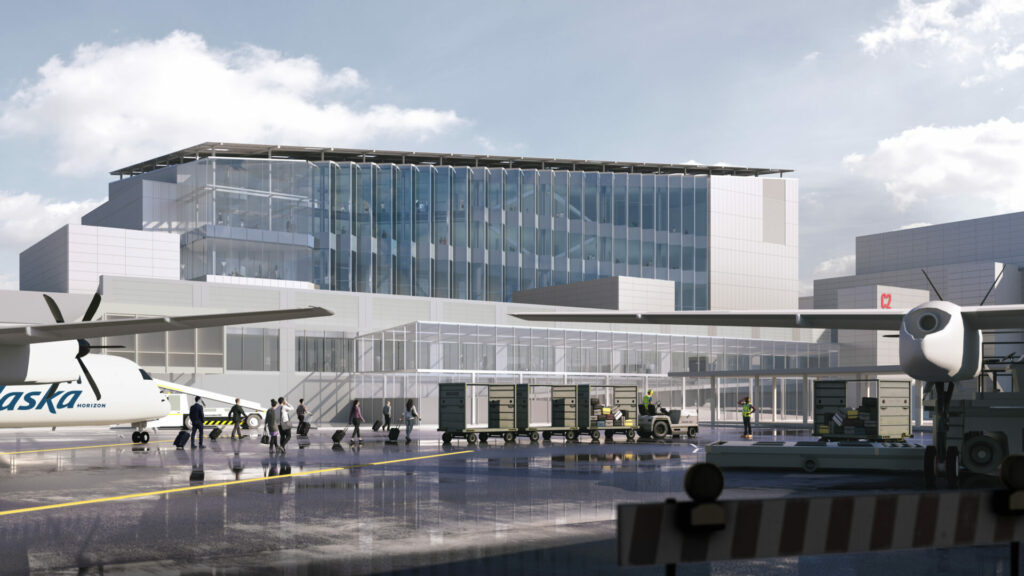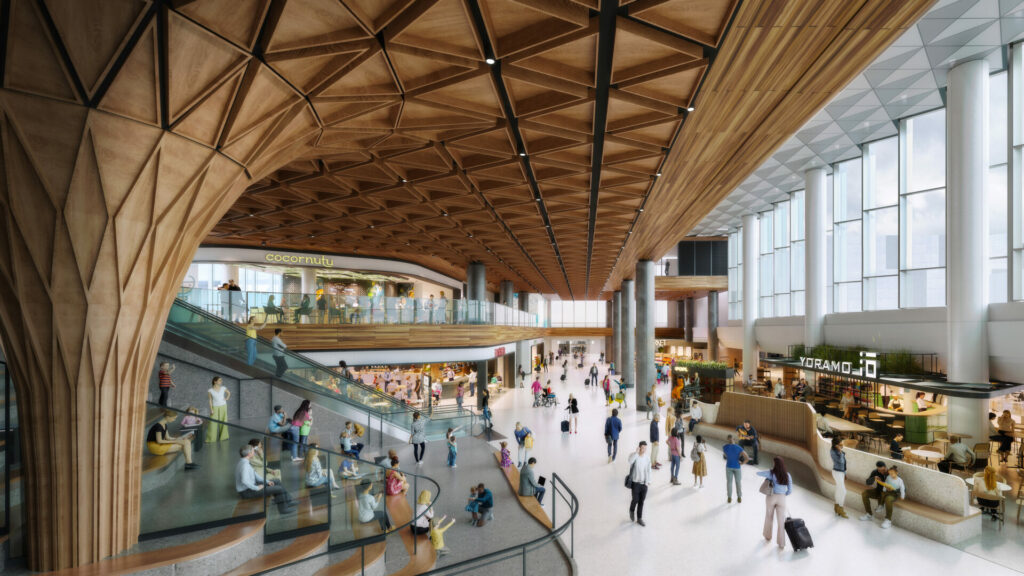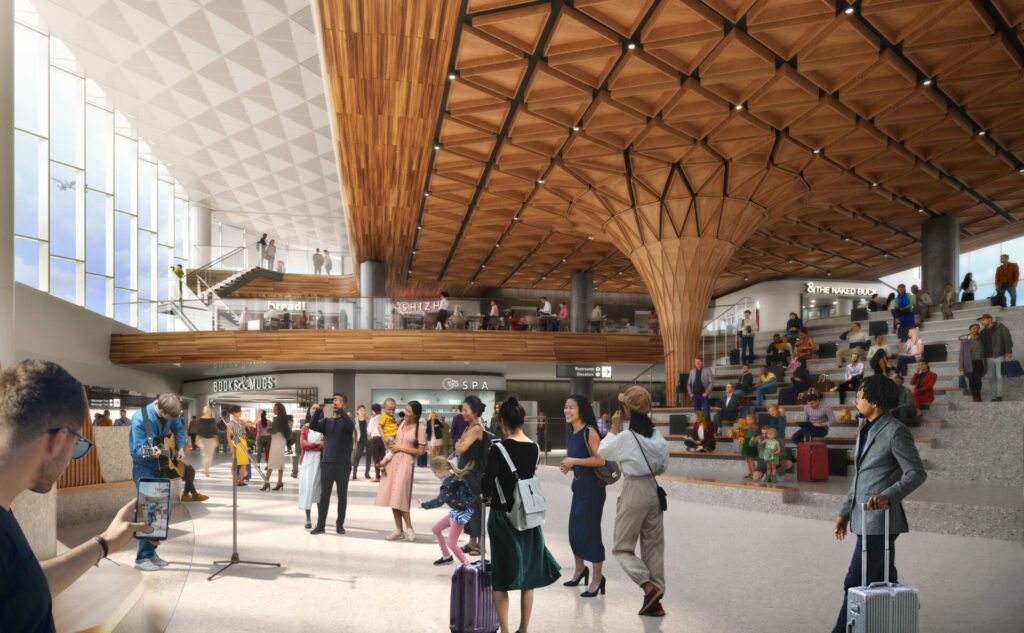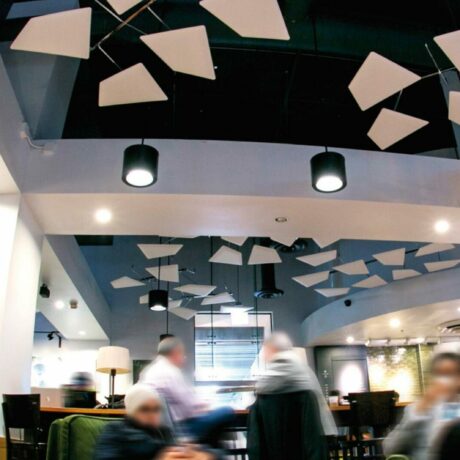Sustainability is one of the most often used words in the world of commercial real estate. In fact, it’s no longer just important, it has become imperative. Beginning with the building’s architectural design, the building materials, all the way through construction, occupancy and management, professionals from all walks are adding sustainability considerations into their projects, And, besides saving money and protecting the environment, there is the added advantage that most of the end-users of a property are attracted to sustainable buildings. Airports are no exception. They use timber, solar panels, modular construction—all to try to limit their impact on the Earth.

Los Angeles-based Woods Bagot spans design, research, data, and performance to create ‘People Architecture,’ putting human experience at the center of its design process to deliver engaging, future-oriented projects that respond to the way people actually use space. The Miller Hull Partnership, based in Seattle, is an internationally recognized architecture, planning, urban and interior design firm that designs dynamic and ecologically responsible buildings, working to create a regenerative and inclusive future through the built environment.
Together they recently revealed the vision for the C Concourse Expansion (CCE) at Seattle-Tacoma International Airport (SEA) where a celebration of the Pacific Northwest, sustainable design, and a rethought approach to traditional terminal offerings will enhance passengers’ experience. Working closely with the Port of Seattle, the collaborative design team reimagined the major concourse through a distinct sense of place, performance, and partnership.

“We have a clear vision for how the airport will look, feel, and function in the coming years,” said SEA Managing Director Lance Lyttle. “Making your experience less stressful and more predictable is at the center of our vision. You can feel the difference now at the newly modernized N Concourse and soon to open International Arrivals Facility. The C Concourse Expansion (scheduled to be completed in 2027) is what’s next in how SEA serves travelers, and we canʼt wait.”
Foregrounding the concept of “Bringing in, seeing out,” the expansion welcomes in the surrounding context and connects back to the regional landscape.
“The C Concourse Expansion will bring much-needed light, air, and passenger amenities to one of the busiest crossroads in the terminal. The new building was designed to bring back the excitement of flight with soaring interior volumes of space and multiple outdoor observation decks that reconnect us to the magic of travel and the iconic mountain and sound views that define the Pacific Northwest,” says Brian Court, Lead Designer and Partner at Miller Hull.
In order to do that, the building’s first key feature will be a performative exterior envelope inspired by the forest and the frame. Just as in nature, where the forest protects from the sun, the building’s shell modulate will light and collect energy.
“The new C Concourse Expansion for SEA will be an inspiring gathering place that is a destination in and of itself— This ambitious project will intertwine the very best aspects of placemaking, sustainability, and signature architecture. The expansion for SEA has many distinct attributes, but its grand stairs and focal pillar clad in locally sourced Pacific Northwest Hemlock–from which sculptural geometries like curves and fractals emanate–are two emblematic features that succinctly convey the project’s leading-edge take on contextual design,” says Matt Ducharme, Woods Bagot’s Principal and West Coast Design Leader.

Inspired by the Pacific Northwest, the concourse’s interior will be an interplay of environments that is defined by both the local energy and a connection to the natural landscape. The more active public spaces are designed to reflect the textures and activities of the famous markets in Seattle and the region. A marketplace will sit at the center of the concourse with a bar and retail kiosks that frame an open seating area that is also defined by a busker stage for local musicians. This stage will face the Grand Stairs and provide an activated connection to the restaurants at the mezzanine level.
The Port of Seattle, which owns and operates SEA, is working to be the greenest and most energy efficient port in North America, prioritizing the health and well-being of travelers and the environment. CCE is the first project to apply the Port of Seattle’s new Sustainable Project Framework and sets the precedent for all future capital projects. Sustainable features include rooftop photovoltaics, fossil fuel free systems for heating and hot water, electrochromatic glazing for windows, dishwashing capabilities for vendors reducing the need for disposal dishware, embodied carbon reduction strategies, low-flow water fixtures, and biophilic design principles.
The Pacific Northwest is defined by the varied natural landscapes of the Cascades. Inspired by the concept of “Bringing in, seeing out,” Woods Bagot and Miller Hull’s SEA C Concourse Expansion brings an authentic, sustainable, and deeply memorable passenger experience to the Pacific Northwest’s largest and fastest-growing airport. Renderings courtesy of Woods Bagot and The Miller Hull Partnership




